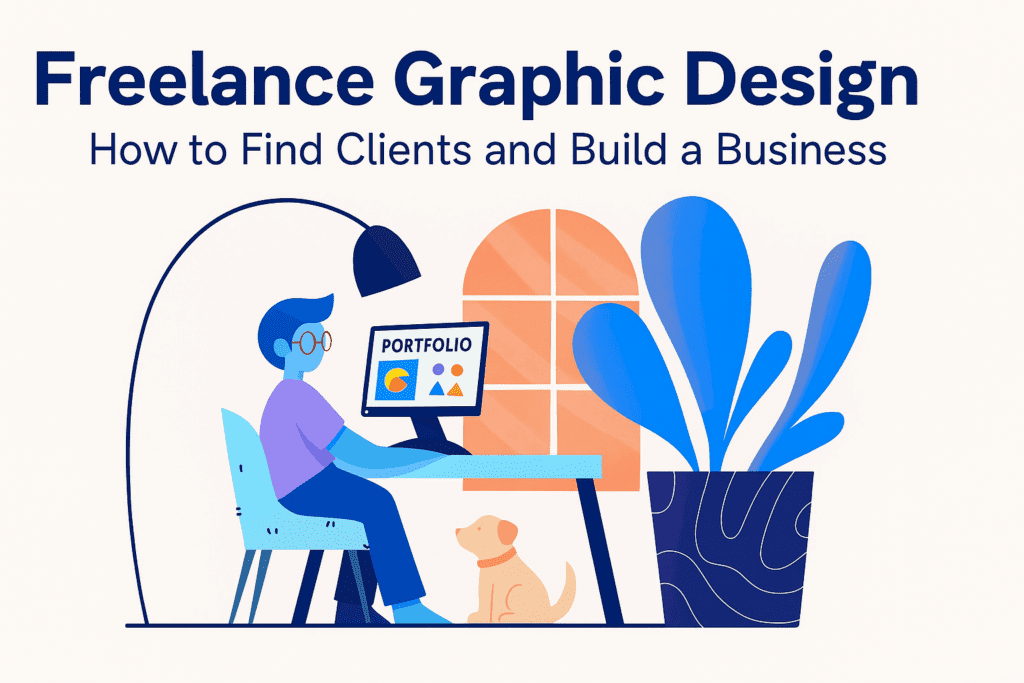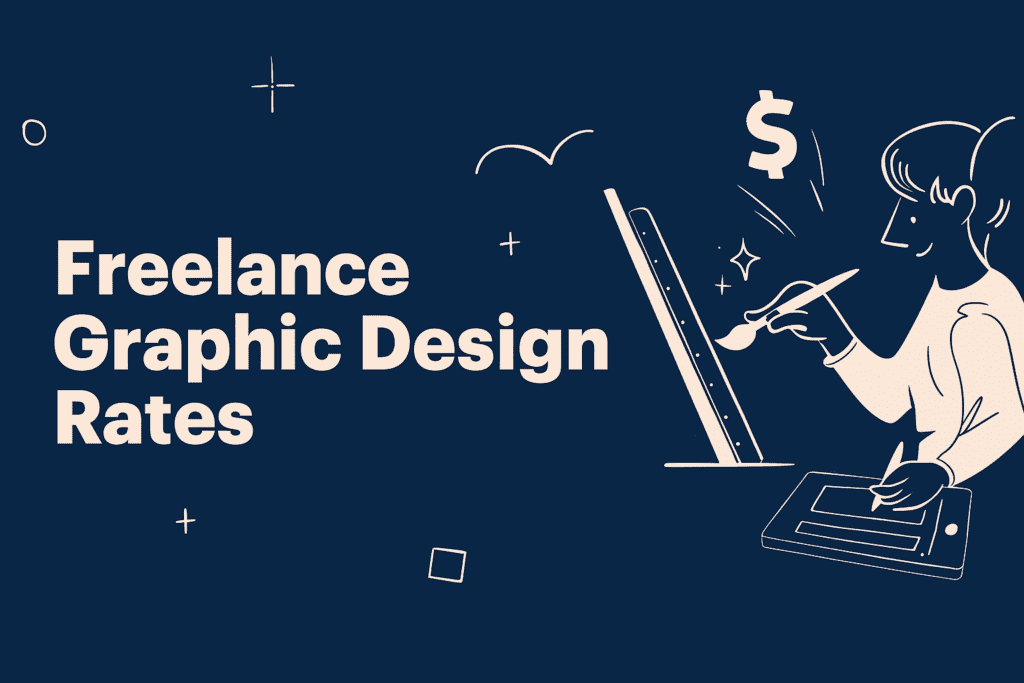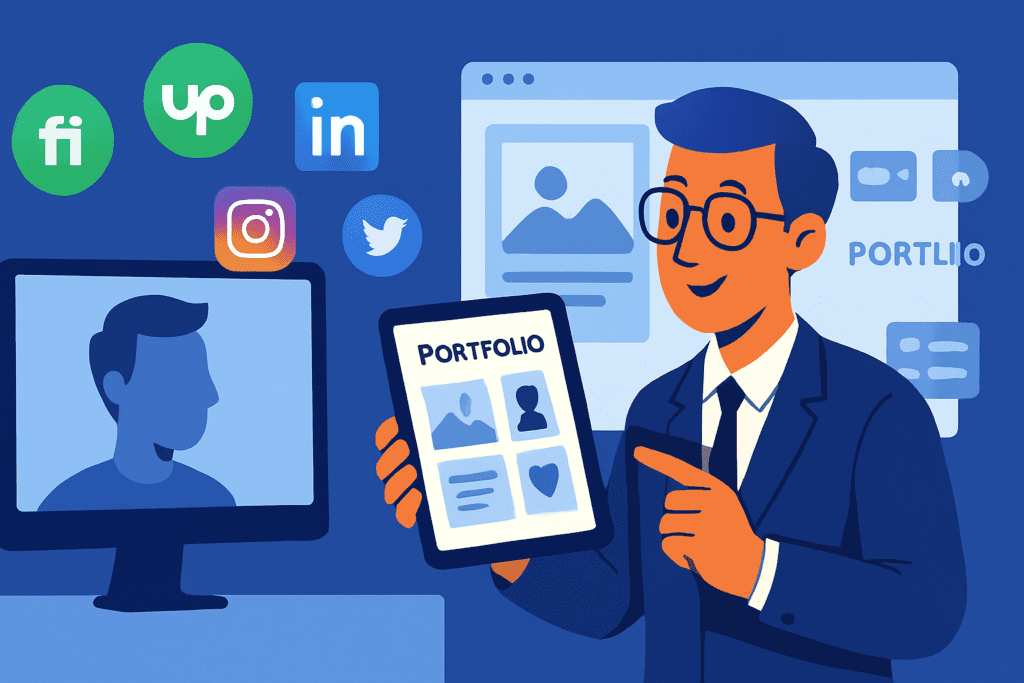Freelance Graphic Design: How to Find Clients and Build a Business
Introduction
In today’s presto-paced digital world, freelance graphic design has surfaced as one of the most satisfying and flexible career options. However, freelancing in graphic design could be the ideal path for you if you are someone who loves being creative and dreams of working on your own terms. With the explosion of online businesses, startups, and content generators, the demand for high-quality visual content is at an all-time high. Brands constantly seek talented contrivers who can produce engaging ensigns, social media creatives, website layouts, banners, and marketing illustrations that set them piecemeal in the crowded digital space.
What makes freelance graphic design especially appealing is the independence it offers. You’re not tied to a 9-to-5 office—rather, you have the freedom to choose your systems, set your own rates, and work from anywhere in the world. Whether it’s from a home office, a cozy café, or while traveling, the choice is yours. Further than just a job, freelancing allows you to turn your creative chops into a particular brand and grow it on your own terms.

1. Define Your Niche and make a Killer Portfolio
Every successful freelance trip starts with clarity. The graphic design assiduity is broad, and trying to do everything for everyone can adulterate your brand. By relating a niche — similar as totem design, social media content, brand identity, or packaging you not only place yourself as an expert but also attract guests looking for exactly what you offer.
Once you’ve chosen your niche, the next step is erecting a portfolio that highlights your chops. Don’t worry if you don’t have real customer work yet; you can produce mock systems grounded on fictional brands or redesigns. Platforms like Behance, Dribbble, and your own particular website are great for showcasing your work professionally. insure that your portfolio reflects your stylish work, explains your design process, and targets your ideal guests.
2. Tools and Chops Every Freelance developer Must Have
Equip yourself with the right tools and mindset to deliver top-notch results and run your business smoothly.
To thrive as a freelance developer, you need both creative tools and essential chops. Popular tools include Adobe Photoshop, Illustrator, InDesign, and druthers like Canva and Figma. These allow you to execute high- quality designs snappily and professionally. But tools alone are not enough. You must also develop communication chops, time operation, and introductory business wit.

Soft chops frequently determine your success. Being suitable to explain your design opinions, handle customer feedback constructively, and manage multiple systems are just as pivotal as your capability to use design software. Also, tools like Trello or Notion can help you organize your systems, deadlines, and customer feedback in one place.
3. How to Find High-Quality Guests (Online & Offline)
Learn the smartest ways to connect with clients who value your work—and are willing to pay for it.
Chancing your first many guests can feel like the biggest chain, but it gets easier with a strategy. Start by creating strong biographies on freelance platforms like Upwork, Fiverr, Freelancer, and Toptal. These platforms allow you to bid on systems, make customer connections, and earn reviews.
Social media is another important tool. Platforms like LinkedIn and Instagram let you showcase your work, engage with implicit guests, and make authority in your niche. Do n’t underrate the power of networking moreover. Reach out to musketeers, original businesses, or attend design meetups andco-working events.
You can also cold pitch via dispatch or direct communication. Just make sure your communication is clear, substantiated, and includes a link to your stylish work. Over time, referrals and repeat guests will come your biggest source of income.
4. How to Price Your Design Services Confidently
One of the biggest challenges freelancers face is pricing. Should you charge hourly, per design, or produce packages? While hourly rates can work in some cases, design- grounded pricing is frequently more profitable and scalable. For illustration, you might charge a fixed rate for a totem design or social media pack.
Research your challengers, understand your value, and noway underestimate your work. produce tiered packages for different budgets and easily outline what each includes. Be transparent about timelines, variations, and redundant charges. Tools like PayPal, Razorpay, or Wise can help you tab guests professionally.
5. Contracts, variations, and customer prospects
Freelancers frequently skip contracts, only to face major headaches latterly. A simple contract can save you from misconstructions, overdue work, or compass creep. Include details like design compass, timeline, deliverables, payment schedule, and modification limits
Set clear prospects from the morning. Define how numerous variations are included, what counts as redundant work, and your communication hours. guests respect clarity, and it positions you as a professional.
6. Retaining guests and building long-term connections
Getting new guests is hard work so when you find a good one, keep them! Deliver quality work on time, be easy to work with, and always communicate professionally. shoot progress updates, ask for feedback, and make variations instantly.
After the design, check in sometimes. A quick communication or design tip can spark another job. Offer fidelity abatements, retainer packages, or seasonal services to keep your guests coming back. A happy customer can come your stylish marketing tool through referrals and witnesses.
7. spanning Your Freelance Design Business
Once you’ve learned the basics, suppose about how to grow. This could mean raising your rates, taking on bigger guests, or creating unresistant income aqueducts. numerous contrivers vend digital products like Canva templates, presets, or indeed run online courses.
You can also unite with other freelancers( like copywriters or web inventors) to offer whisked services. ultimately, you might consider hiring help or starting your ownmicro-agency. The thing is to free up time and increase income without burning out
9. Building Your Personal Brand as a Freelance Designer

Your personal brand is much more than a logo – it’s how clients remember, trust, and refer you. In the freelance world, your personal brand is your reputation – and that is just as valuable as your design skills. Clients do not only hire you because of your portfolio, they are hiring you because of the way you present yourself, the way you communicate, and the way you position your services. That is personal branding.
To start, decide on a visual style you want to be consistent with across all of your platforms. This includes your portfolio site, your social media platforms, your email signature, and your proposals. Your visual identity (logo, color palette, and typography) should all represent your niche genre and design preference. For instance, if you provide minimalistic branding, your portfolio and your posts should be visually representative of that overall aesthetic.
Conclusion Your Design trip Starts Now
Freelance graphic design is further than just a career; it’s a life erected on creativity, freedom, and growth. With the right mindset, tools, and strategy, you can make a successful business doing what you love. Start by defining your niche, erecting your portfolio, and taking that first step to chancing your ideal guests. Flashback: every top freelancer started where you are now—doubtful, agitated, and ready to learn. So don’t stay for the perfect moment. Start the moment, stay harmonious, and watch your freelance design trip unfold.



